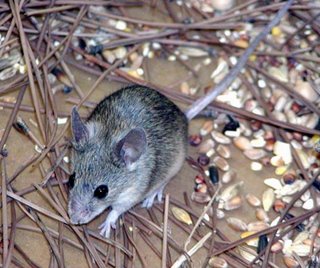 Se ha llamado Mus cypriacus y es de Chipre
Se ha llamado Mus cypriacus y es de ChipreArtículo de National Geographic
October 13, 2006—Meet the Cypriot mouse—the first new mammal species to be discovered in Europe in more than a century.
The scientists who announced the find yesterday think the previously unknown creature is confined to the Mediterranean island of Cyprus (map of Cyprus).
The mouse differs from other European mice by having a bigger head, bigger ears, bigger eyes, and bigger teeth, says its discoverer, French zoologist Thomas Cucchi.
Cucchi, who is based at Durham University in England, noticed the small gray rodent while studying mice teeth from the Stone Age and comparing them with those of species still living on Cyprus. Genetic tests later confirmed it as a new species, now named Mus cypriacus.
New discoveries of mammal species are considered rare events, and most tend to occur in remote rain forests in hot spots of species diversity such as Southeast Asia. (Related photo: "New Mammal Discovered in Borneo?" [December 6, 2005].)
"It was generally believed that every species of mammal in Europe had been identified," Cucchi said. This is why the discovery was "so unexpected and exciting."
Also highly unusual was finding an island mammal that had survived the arrival of humans—and the domesticated animals and stowaway rodents that came with them—Cucchi says.
Most other mammal species known only from Mediterranean islands went extinct after being eaten or outcompeted by alien animals.
Cucchi says his research suggests the Cypriot mouse colonized and adapted to the island more than 9,000 years ago, several thousand years before human habitation.
The mouse is the only native Mediterranean rodent still alive, he added, and as such can be considered a "living fossil."
0 comentarios realizados :
Publicar un comentario